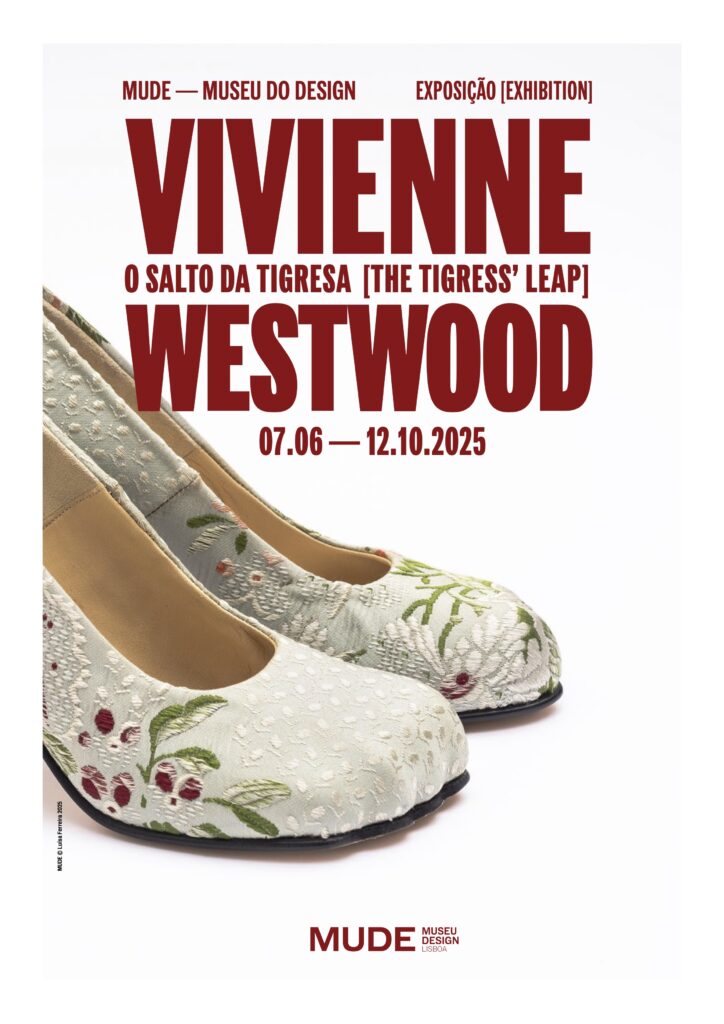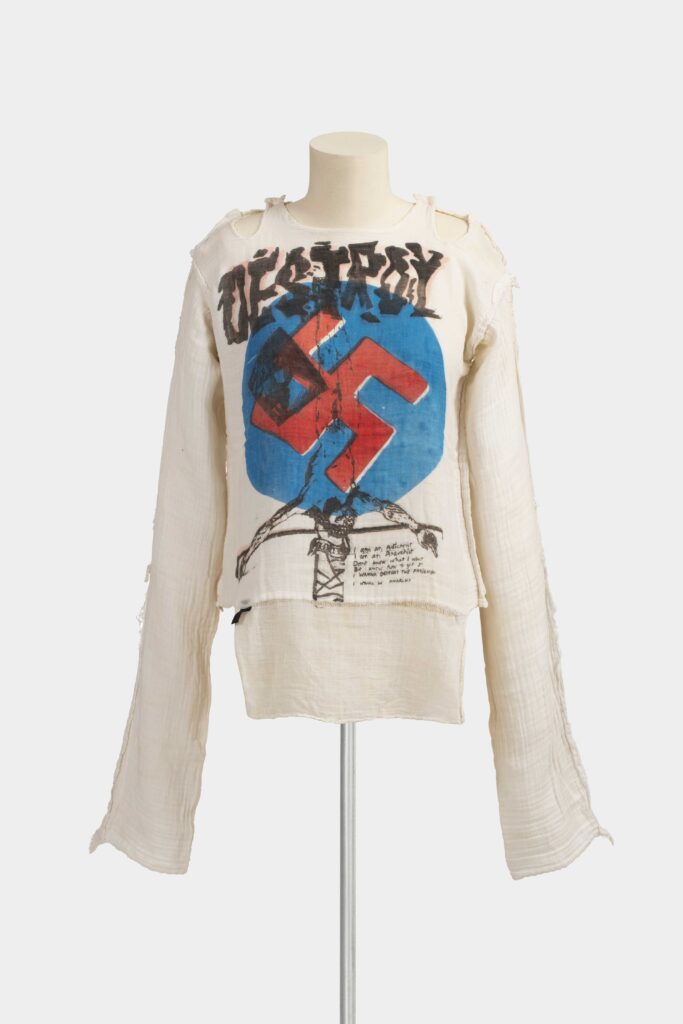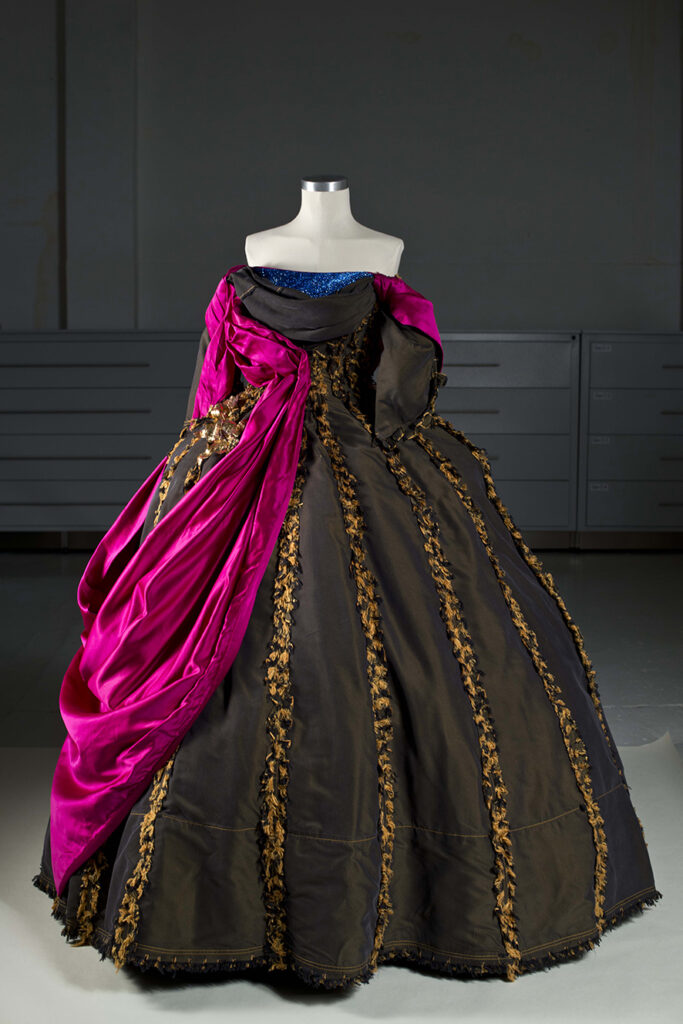For some designers, fashion is simply fashion – but for Vivienne Westwood, it was pure activism. MUDE – Museu do Design e da Moda in Lisbon presents an exciting exhibition about the “Grandmother of Punk” and activist fighter: Vivienne Westwood: The Tigress’ Leap.
Born into a working-class family in Derbyshire, Westwood initially worked as a teacher before her partnership with Malcolm McLaren, manager of the Sex Pistols, ignited the punk movement in London. Together, they transformed McLaren’s boutique, crafting bondage gear, ripped tees, and provocative graphics that defied authority, turning it into a hub for the punk subculture in London.
Westwood’s designs evolved from punk’s raw energy to historical reinventions, like her Pirate Collection (1981), but her mission remained constant: to resist normativity. Her creations carried meaning, whether through slogans, symbolic historical references like corsets, or even Harris Tweed, critiquing consumerism and power structures. Beyond the runway, she campaigned fiercely for climate action, human rights, and nuclear disarmament, supporting the Green Party and staging protests.
Running until October 12th at MUDE, curator Anabela Becho, alongside exhibition designer Luís Saraiva and graphic designer Paula Guimarães, transformed MUDE’s -1 floor into a space where research, critical thinking, and theatrical presentation collide.
Vivienne Westwood: The Tigress’ Leap showcases around 50 pieces, including clothing, accessories, fashion prints, photography, books, and music, tracing the designer’s revolutionary lifestyle. The exhibition features items from the Francisco Capelo Collection (MUDE’s collection), as well as institutional and private loans.
Curator Anabela Becho draws on Walter Benjamin’s “Tiger’s Leap” philosophy to frame Westwood’s work as a cross-century dialogue. The exhibition juxtaposes 18th-century historical garments with Westwood’s 20th and 21st century reinterpretations, creating a visual timeline of her take on historicism.
Indeed, the pieces highlight Westwood’s recurring themes: resistance, craftsmanship, and activism.


